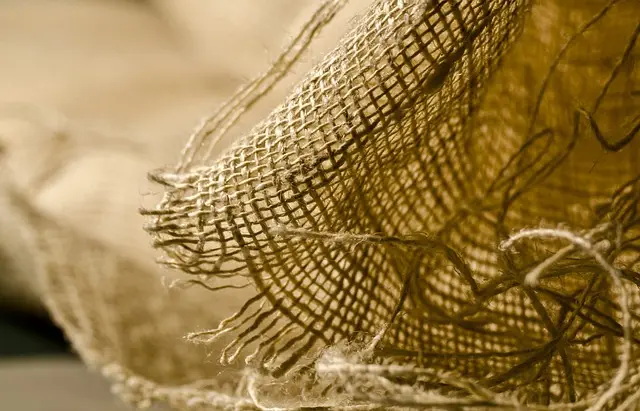Muscle soreness, commonly known as delayed onset muscle soreness (DOMS), can occur after intense physical activity and is characterized by pain and tenderness in the affected muscles within 24 to 72 hours post-exercise. DOMS arises from a combination of tissue damage, inflammation, and the body's response to strenuous or unaccustomed exertion. Kratom Red Vein, derived from the Mitragyna speciosa tree, has been traditionally used in Southeast Asia for its medicinal properties, particularly for pain management. Its pain-relieving effects are believed to stem from alkaloids like 7-hydroxymitragynine and mitragynine, which may interact with opioid receptors similarly to synthetic opioids but with potentially fewer side effects. Kratom Red Vein is reported to help ease muscle soreness by reducing discomfort and inducing relaxation, which can aid in workout recovery or alleviate chronic pain conditions. However, it's crucial to consult healthcare professionals before using kratom due to its legal status and potential for interactions with other medications. Safety precautions include starting with a conservative dosage, monitoring individual responses, staying hydrated, considering personal health profiles, and adhering to regular medical check-ups, especially when using other supplements or prescriptions. Kratom Red Vein can be a natural alternative for pain management within a holistic recovery approach that includes rest, proper nutrition, and possibly other therapeutic practices. Users should be mindful of its potency and individual sensitivities to ensure safe and effective use.
Muscle soreness can be a persistent challenge for athletes, fitness enthusiasts, and anyone engaging in physical activity. When exploring natural remedies for relief, Kratom Red Vein emerges as a noteworthy option due to its potential analgesic properties. This article delves into the interplay between muscle soreness and the benefits of Kratom Red Vein, offering insightful strategies for incorporating this supplement into your recovery routine. We’ll navigate through effective relief strategies, highlight safety considerations, and provide best practices for harnessing Kratom Red Vein to mitigate discomfort after strenuous exercise.
- Understanding Muscle Soreness and Kratom Red Vein's Role in Relief
- Effective Muscle Soreness Relief Strategies Incorporating Kratom Red Vein
- Safety Considerations and Best Practices for Using Kratom Red Vein to Alleviate Muscle Soreness
Understanding Muscle Soreness and Kratom Red Vein's Role in Relief

Muscle soreness, often referred to as delayed onset muscle soreness (DOMS), can occur after intense physical activity or exercise. This condition is characterized by pain and tenderness in the muscles that were used during the exercise, typically felt within 24 to 72 hours post-activity. The exact mechanisms underlying DOMS are not fully understood but involve muscle damage, inflammation, and the metabolic stress response to unaccustomed or intense exertion. When exploring natural remedies for muscle soreness relief, kratom supplements, particularly those derived from the red vein strain, have gained attention due to their potential analgesic properties. Kratom Red Vein, sourced from the leaves of the Mitragyna speciosa tree native to Southeast Asia, has been traditionally used for its medicinal benefits, including pain management. This strain contains alkaloids such as 7-hydroxymitragynine and mitragynine, which are believed to interact with the body’s opioid receptors, providing pain relief without the side effects commonly associated with synthetic opioids. Users often report that kratom Red Vein helps alleviate muscle soreness by reducing discomfort and promoting a sense of relaxation, which can be particularly beneficial for individuals recovering from intense workouts or suffering from chronic pain conditions. As with any supplement, it’s important to consult with a healthcare provider before incorporating kratom into one’s regimen, especially considering the varying legal statuses of kratom across regions and its potential for interaction with other medications.
Effective Muscle Soreness Relief Strategies Incorporating Kratom Red Vein

Integrating Kratom Red Vein into muscle soreness relief strategies can be a beneficial approach for those seeking natural remedies. This particular strain of kratom is renowned for its potential analgesic properties, which may help alleviate muscle discomfort resulting from intense physical activity or injury. The alkaloids present in Kratom Red Vein, such as 7-hydroxymitragynine and mitragynine, are believed to interact with the body’s opioid receptors, thereby modulating pain perception. Users often report a sense of relaxation and reduced inflammation after consumption, which can be particularly advantageous for individuals engaged in athletic training or those recovering from physical exertion.
When incorporating Kratom Red Vein into your muscle soreness relief regimen, it is crucial to adhere to appropriate dosage guidelines and to consult with a healthcare provider to ensure safety and efficacy. Additionally, this supplement should be used as part of a comprehensive approach that may include rest, proper nutrition, hydration, and other complementary therapies. By leveraging the potential pain-relieving effects of Kratom Red Vein, individuals can support their recovery process and maintain their overall well-being during periods of muscle soreness. Always prioritize informed usage and consider individual sensitivities when integrating kratom into any health regimen.
Safety Considerations and Best Practices for Using Kratom Red Vein to Alleviate Muscle Soreness

When integrating kratom red vein into your regimen for muscle soreness relief, it’s imperative to approach its use with caution. Kratom, derived from the leaves of the Mitragyna speciosa tree, has been traditionally used in Southeast Asia for its stimulant and sedative effects. Red vein kratom, specifically, is known for its analgesic properties, which may help alleviate muscle soreness. However, safety considerations are paramount due to the potent nature of kratom. Users should start with a low dose to gauge their sensitivity, as individual responses can vary significantly. It’s advisable to follow dosing guidelines precisely and avoid exceeding recommended amounts, as this can increase the risk of adverse effects.
Best practices for using kratom red vein include consuming it at consistent intervals and in a controlled environment. It’s crucial to maintain hydration and be mindful of your overall health status, as kratom can interact with certain medications and conditions. Regular blood work and consultation with a healthcare provider are recommended, especially if you have pre-existing health concerns or are taking other supplements or prescriptions. Additionally, it’s wise to monitor your body’s reaction to kratom red vein, noting any changes in mood or physical well-being. This vigilance can help ensure a safer experience and optimize the benefits of this natural supplement for muscle soreness relief. Remember to adhere to local laws and regulations regarding kratom use, as legality may vary by jurisdiction.
muscle soreness, kratom red vein, relief strategies, muscle recovery, kratom supplements, safety considerations, best practices
In conclusion, muscle soreness can be a significant impediment to maintaining an active and healthy lifestyle. However, the insightful exploration of kratom red vein’s role in providing relief suggests that this natural supplement may offer a viable solution for those experiencing muscular discomfort. By integrating kratom red vein into a comprehensive muscle soreness relief strategy, individuals can potentially alleviate pain and accelerate recovery. It is imperative, though, to approach the use of kratom with caution, adhering strictly to safety considerations and best practices to ensure its efficacy and to avoid any potential adverse effects. As such, those interested in exploring kratom red vein as a muscle soreness remedy should do so responsibly and with an informed understanding of its implications for their health and well-being.






